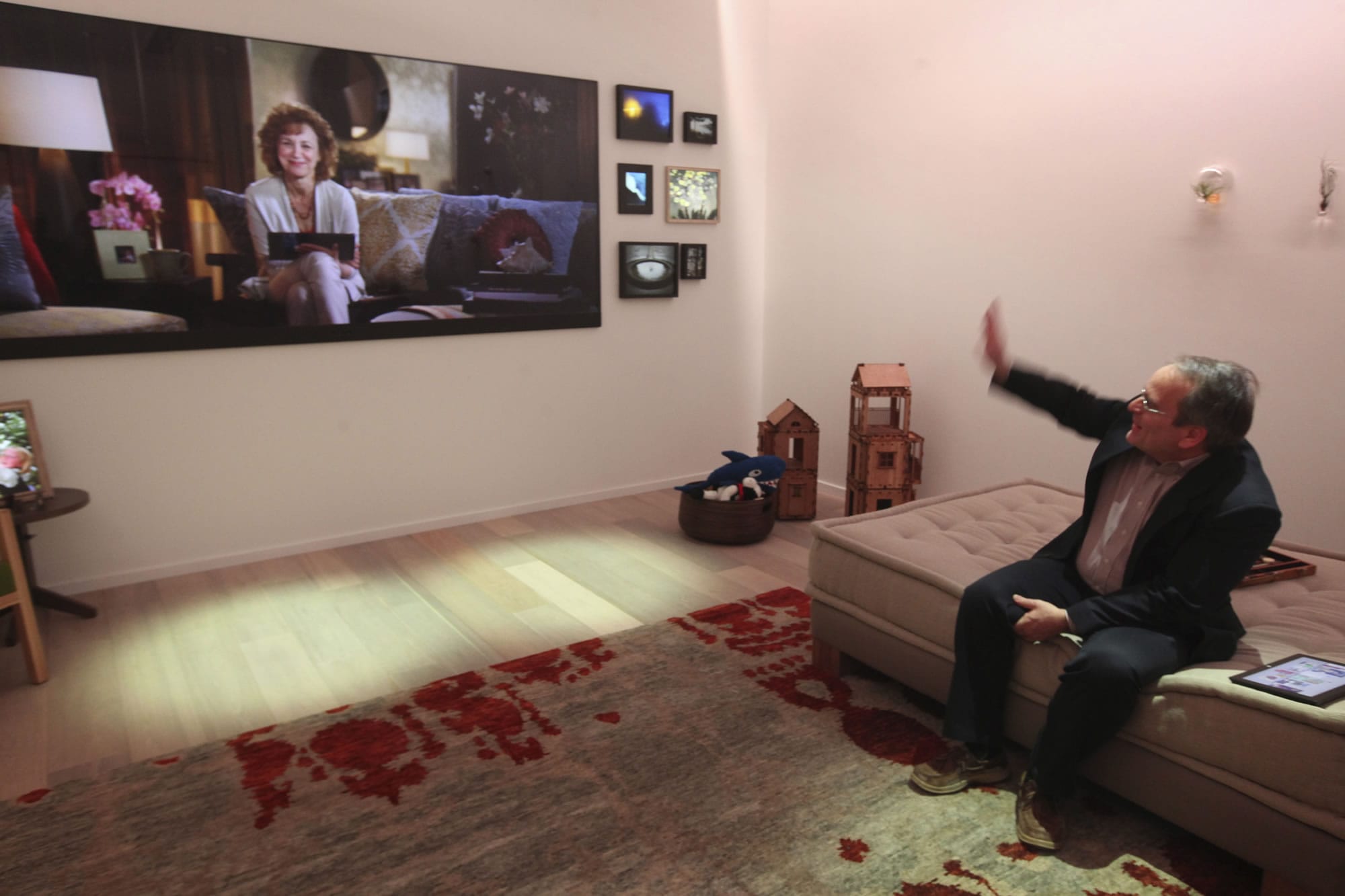SEATTLE — Put a skillet on your stove as you prepare to make a stir-fry, and an interactive chef on the big screen in your kitchen tells you a wok would probably work better.
Take a sketch of something you’ve been drawing on your tablet, and swipe it over to a large digital screen that doubles as your work surface. Then get that sketch to appear on a huge wall screen so that you and a co-worker halfway around the world can work on the sketch simultaneously.
Those are some of the scenarios Microsoft says could happen in the next five to 10 years — and has brought to life now in its new Envisioning Center, which opened this month.
For nearly 20 years, Microsoft has had the Microsoft Home (also referred to as “Home of the Future”) in a building on its Redmond campus. In that facility, Microsoft replicates a home outfitted with technologies that it thinks will be in use five to 10 years in the future.
Since 2002, Microsoft’s Office division has had a similar futuristic workplace that includes productivity technologies.
Now Microsoft has combined the two to form the Envisioning Center, a completely revamped home and office of the future, complete with a “third place” area meant to represent spaces such as retail stores and restaurants.
It’s like a concept car, said Jonathan Cluts, Microsoft’s director of strategic prototyping. Not every single thing will come to be in five or 10 years, but “we’re going to show you a future that we believe in, that we are investing in.”
Microsoft won’t disclose the square footage of the Envisioning Center, but it sits in the space formerly occupied by the old home and office, located on the second floor of the company’s Executive Briefing Center. Like its predecessors, it is not open to the public.
Rather, it’s designed to give visiting customers and dignitaries a sense of where the company is headed, and to help some Microsoft employees think through products and services they’re developing.
Making people smarter
On a recent tour, Cluts and Anton Andrews, Microsoft’s director of Office envisioning, showed off the new digs.
The new center features open, flexible spaces and centers on bringing people together, making people smarter, and using natural gestures, speech and touch to do things.
The new center also offers a focused picture of how Microsoft is integrating the work of its various divisions and how that integration can play out as the company evolves from providing strictly software to providing devices and services.
Kinect motion- and voice-sensing technology is everywhere. So are huge, multitouch screens from Perceptive Pixel, the company Microsoft acquired last year.
Technologies from Microsoft’s Online division and Server and Tools business are evident in everything from search results to relevant information that pop up in various contexts.
Open the door to the facility, and you’ll enter an open office space in which there are stations for individual work, brainstorming sessions and team collaboration.
Content on the “team action wall” can change instantly, depending on the team or on the person who’s walking by the wall. A marketing person, for instance, would see a timeline of marketing decisions to be made, along with tools to help them make the decisions.
The “third place” area has a pop-up retail space in which a user can place a toy car on a screen to find out more about the toy by touching its various areas. The setup then allows the toy to be sent as a gift using information on your smartphone.
In the home area, there’s a big window that can become a giant display screen; a kitchen with a digital whiteboard that can, for instance, display an interactive chef that can be called up to guide you through making dinner.
In the living room, more screens demonstrate how a grandmother in another state can read an interactive story with a grandchild. The grandmother is on one screen, and scenes from the story appear on the other screen.
The new center is built around Microsoft’s investments in three main technological areas, said Craig Mundie, senior adviser to Microsoft CEO Steve Ballmer and a former chief research and strategy officer at the company:
• Big data: the ability to synthesize huge amounts of data to produce information that’s useful to the user;
• Natural user interface, in which people use natural motions such as talking or gesturing to interact with computers;
• Machine learning: teaching computers how to see, listen, translate and do other tasks.



